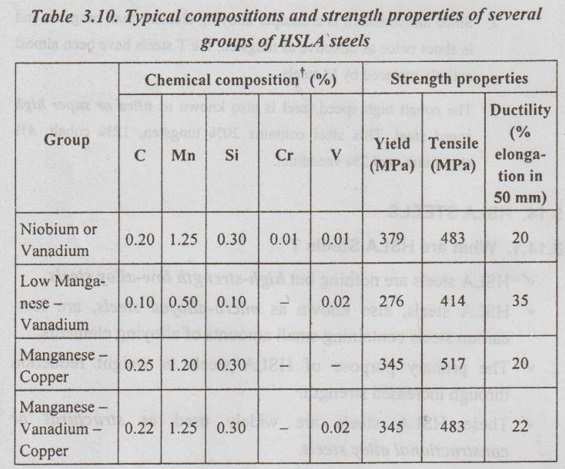HSLA steels are nothing but high-strength low-alloy steels.
HSLA STEELS
1. What are HSLA Steels?
✓ HSLA steels are nothing but high-strength low-alloy steels.
✓ HSLA steels, also known as micro-alloyed steels, are low- carbon steels containing small amounts of alloying elements.
✓ The primary purpose of HSLA steels is weight reduction through increased strength.
✓ These HSLA steels are widely used as structural or constructional alloy steels.
✓ For structural applications, high yield strength, good weldability, and corrosion resistance are most desired, with only limited ductility and virtually no hardenability.
✓ These low-alloy structural steels have about twice the yield strength of the plain-carbon structural steels.
✓ The increase in strength, coupled with resistance to martensite formation in a weld zone of a HSLA steel, is obtained by adding low percentages of several elements, such as manganese, silicon, niobium, vanadium, etc.
✓ About 0.20% Cu is usually added to improve corrosion resistance.
2. Compositions and Properties of HSLA steels
Table 3.10 presents four of the common HSLA steels, their compositions, and strength properties.

† All have 0.04% P; 0.05% S; and 0.20% Cu.
3. Characteristics of HSLA Steels
The HSLA steels posses the following important properties.
(i) HSLA steels have very high yield strength.
(ii) They can be welded without becoming brittle.
(iii) These are very light i.e., weight savings upto 20 to 30% can be achieved without compromising its strength.
(iv) They have high corrosion resistance.
(v) They are ductile, formable, and machinable.
4. Applications of HSLA Steels
The HSLA steels are widely used as structural materials. The structural applications (wherever possible, substantial weight saving is desired) include bridges, towers, columns in high-rise buildings, pressure vessels, automobiles, trains, etc.
No comments:
Post a Comment